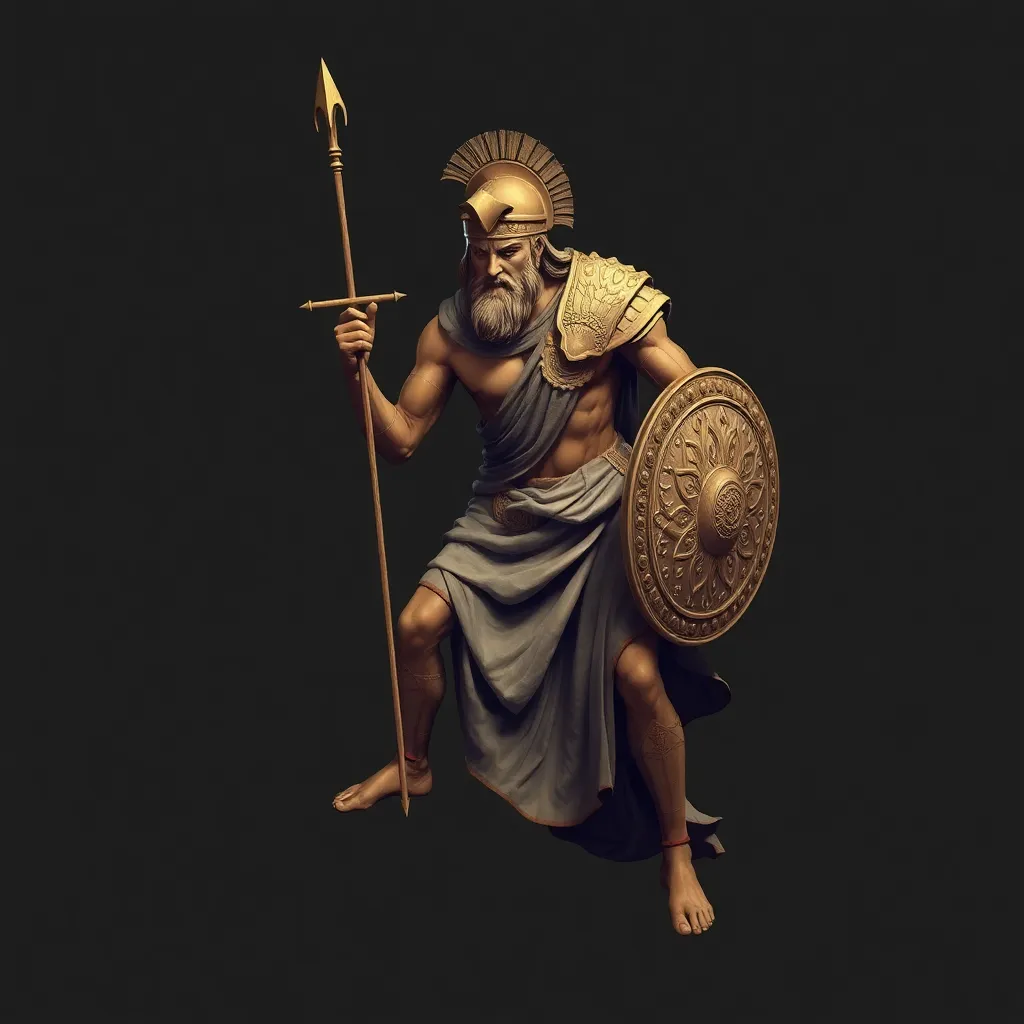The Vulnerability of Achilles: The Myth of His Heel
I. Introduction to Achilles: The Legend and His Legacy
Achilles is one of the most celebrated heroes in Greek mythology, known for his extraordinary strength, unparalleled bravery, and significant role in the Trojan War. His legacy has transcended time, making him a symbol of heroism in literature and culture.
During the Trojan War, Achilles was not only a fierce warrior but also a central figure whose choices and actions shaped the course of the conflict. His importance is underscored by his relationships with other key figures, such as Agamemnon, Patroclus, and Hector. However, Achilles’ tale is not merely one of invincibility but also of vulnerability, most famously encapsulated in the concept of his heel.
II. The Birth and Early Life of Achilles
Achilles was born to Thetis, a sea nymph, and Peleus, a mortal king. From the outset, his life was shrouded in prophecy; it was foretold that he would either lead a long, uneventful life or achieve everlasting glory but die young in battle. This duality set the stage for the complexities of his character.
Thetis, determined to protect her son, sought to make him invulnerable. She dipped him into the River Styx, which granted him a near-complete shield against harm. However, she held him by his heel, which remained untouched by the water, unknowingly marking it as his only vulnerability.
III. The Myth of Achilles’ Heel: Origins and Interpretations
The story of Achilles’ heel has various interpretations across ancient texts. The most notable account comes from Homer’s “Iliad,” which, while it does not explicitly mention the heel, sets the stage for Achilles’ legendary status and his eventual downfall.
- In later interpretations, such as those by later poets and historians, the heel becomes a symbol of Achilles’ vulnerability.
- Some versions of the myth attribute Achilles’ death directly to his heel, emphasizing that even the mightiest can have a critical weakness.
The heel symbolizes not just physical vulnerability but also the emotional frailties that can lead to downfall. This duality reflects the human condition, where strength can often harbor hidden weaknesses.
IV. The Role of Fate and Destiny in Achilles’ Life
Fate plays a pivotal role in Greek mythology, often depicted as an inescapable force. Achilles embodies this concept, as he was destined for greatness but also for an early death. His acceptance of this fate adds depth to his character.
Despite his exceptional abilities, Achilles faced a paradox: he was a hero meant to achieve immortality through glory, yet his life was predetermined to be cut short. This tension between destiny and choice is central to his narrative.
V. The Impact of Achilles’ Vulnerability on His Character
Achilles’ personality traits are complex; he is brave, proud, and often impulsive. His vulnerability, especially concerning his heel, is intertwined with his character, influencing his actions and decisions throughout the Trojan War.
- His pride often leads to anger, notably in his conflict with Agamemnon, which results in his withdrawal from battle.
- This withdrawal has dire consequences for the Greek forces, highlighting how Achilles’ emotional vulnerabilities can impact the broader context of the war.
Thus, Achilles serves as a reminder that even the strongest heroes have weaknesses that can lead to significant consequences.
VI. Achilles’ Death: The Heel and Its Consequences
Achilles’ death is one of the most poignant moments in Greek mythology. According to legend, he was killed by Paris, who shot an arrow guided by the god Apollo. This arrow struck Achilles in his vulnerable heel, fulfilling the prophecy of his downfall.
The impact of Achilles’ death resonated throughout Greek culture, symbolizing the tragic end of a hero and the fragility of life. It serves as a reminder that even the greatest warriors are not invincible, and their vulnerabilities can lead to their demise.
VII. Modern Interpretations and Cultural References
The phrase “Achilles’ heel” has permeated modern language, representing a critical vulnerability in an otherwise strong entity. This term is widely used in various contexts, from medicine to business, illustrating the concept of a significant weakness amidst strength.
- In contemporary literature and media, the theme of vulnerability is often explored through characters that resemble Achilles, showcasing their strengths and weaknesses.
- Psychological interpretations of Achilles’ story delve into the complexities of human emotions, pride, and the burden of expectations.
These modern interpretations highlight the timeless nature of Achilles’ tale, resonating with audiences across different eras.
VIII. Conclusion: The Enduring Legacy of Achilles’ Vulnerability
In reflecting on the duality of strength and weakness, Achilles stands as a powerful figure in mythology. His story teaches us that vulnerability is an inherent part of the human experience, reminding us that even the mightiest can fall.
The relevance of Achilles’ story in today’s context serves as a crucial lesson on the acceptance of our own vulnerabilities. It encourages us to recognize that strength is not merely the absence of weakness but often coexists with it.
Ultimately, the myth of Achilles and his heel continues to offer valuable lessons for humanity, urging us to embrace our complexities and understand the nuances of our existence.




